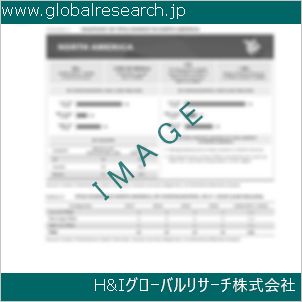1. Preface
1.1. Market Definition and Scope
1.2. Market Segmentation
1.3. Key Research Objectives
1.4. Research Highlights
2. Assumptions and Research Methodology
3. Executive Summary: Global Cell Separation Technologies Market
4. Market Overview
4.1. Introduction
4.1.1. Product Definition
4.1.2. Industry Evolution / Developments
4.2. Overview
4.3. Market Dynamics
4.3.1. Drivers
4.3.2. Restraints
4.3.3. Opportunities
4.4. Global Cell Separation Technologies Market Analysis and Forecast 2017–2031
5. Key Insights
5.1. Porter’s Five Force Analysis
5.2. Technological Advancements
5.3. Rising Research & Development across globe
5.4. Disease Prevalence & Incidence Rate Globally with Key Countries
6. Global Cell Separation Technologies Market Analysis and Forecast, By Product
6.1. Introduction & Definition
6.2. Key Findings / Developments
6.3. Market Value Forecast, by Product, 2017–2031
6.3.1. Instruments
6.3.2. Consumables & Reagents
6.4. Market Attractiveness Analysis, By Product
7. Global Cell Separation Technologies Market Analysis and Forecast, By Technology
7.1. Introduction & Definition
7.2. Key Findings / Developments
7.3. Market Value Forecast, by Technology, 2017–2031
7.3.1. Gradient Centrifugation
7.3.2. Surface Markers Separation
7.3.3. Fluorescence Activated Cell Sorting
7.3.4. Magnetic Cell Sorting
7.3.5. Filtration Based Separation
7.4. Market Attractiveness Analysis, By Technology
8. Global Cell Separation Technologies Market Analysis and Forecast, By Application
8.1. Introduction & Definition
8.2. Key Findings / Developments
8.3. Market Value Forecast, by Application 2017–2031
8.3.1. Stem Cell research
8.3.2. Immunology
8.3.3. Neuroscience
8.3.4. Cancer Research
8.3.5. Others (Diagnostics, etc.)
8.4. Market Attractiveness Analysis, By Application
9. Global Cell Separation Technologies Market Analysis and Forecast, By End-user
9.1. Introduction & Definition
9.2. Key Findings / Developments
9.3. Market Value Forecast, by End-user 2017–2031
9.3.1. Biotechnology & Pharmaceutical Companies
9.3.2. Hospitals & Diagnostic Laboratories
9.3.3. Academic & Research Institutes
9.3.4. Others (CROs, etc.)
9.4. Market Attractiveness Analysis, By End-user
10. Global Cell Separation Technologies Market Analysis and Forecast, By Region
10.1. Key Findings
10.2. Market Value Forecast, by Region
10.2.1. North America
10.2.2. Europe
10.2.3. Asia Pacific
10.2.4. Latin America
10.2.5. Middle East & Africa
10.3. Market Attractiveness Analysis, By Region
11. North America Cell Separation Technologies Market Analysis and Forecast
11.1. Introduction
11.1.1. Key Findings
11.2. Market Value Forecast, by Product, 2017–2031
11.2.1. Instruments
11.2.2. Consumables & Reagents
11.3. Market Value Forecast, by Technology, 2017–2031
11.3.1. Gradient Centrifugation
11.3.2. Surface Markers Separation
11.3.3. Fluorescence Activated Cell Sorting
11.3.4. Magnetic Cell Sorting
11.3.5. Filtration Based Separation
11.4. Market Value Forecast, by Application, 2017–2031
11.4.1. Stem Cell research
11.4.2. Immunology
11.4.3. Neuroscience
11.4.4. Cancer Research
11.4.5. Others (diagnostics, etc.)
11.5. Market Value Forecast, by End-user, 2017–2031
11.5.1. Biotechnology & Pharmaceutical Companies
11.5.2. Hospitals & Diagnostic Laboratories
11.5.3. Academic & Research Institutes
11.5.4. Others (CROs, etc.)
11.6. Market Value Forecast, by Country, 2017–2031
11.6.1. U.S.
11.6.2. Canada
11.7. Market Attractiveness Analysis
11.7.1. By Product
11.7.2. By Technology
11.7.3. By Application
11.7.4. By End-user
11.7.5. By Country
12. Europe Cell Separation Technologies Market Analysis and Forecast
12.1. Introduction
12.1.1. Key Findings
12.2. Market Value Forecast, by Product, 2017–2031
12.2.1. Instruments
12.2.2. Consumables & Reagents
12.3. Market Value Forecast, by Technology, 2017–2031
12.3.1. Gradient Centrifugation
12.3.2. Surface Markers Separation
12.3.3. Fluorescence Activated Cell Sorting
12.3.4. Magnetic Cell Sorting
12.3.5. Filtration Based Separation
12.4. Market Value Forecast, by Application, 2017–2031
12.4.1. Stem Cell research
12.4.2. Immunology
12.4.3. Neuroscience
12.4.4. Cancer Research
12.4.5. Others (diagnostics, etc.)
12.5. Market Value Forecast, by End-user, 2017–2031
12.5.1. Biotechnology & Pharmaceutical Companies
12.5.2. Hospitals & Diagnostic Laboratories
12.5.3. Academic & Research Institutes
12.5.4. Others (CROs, etc.)
12.6. Market Value Forecast, by Country/Sub-region, 2017–2031
12.6.1. Germany
12.6.2. U.K.
12.6.3. France
12.6.4. Italy
12.6.5. Spain
12.6.6. Rest of Europe
12.7. Market Attractiveness Analysis
12.7.1. By Product
12.7.2. By Technology
12.7.3. By Application
12.7.4. By End-user
12.7.5. By Country/Sub-region
13. Asia Pacific Cell Separation Technologies Market Analysis and Forecast
13.1. Introduction
13.1.1. Key Findings
13.2. Market Value Forecast, by Product, 2017–2031
13.2.1. Instruments
13.2.2. Consumables & Reagents
13.3. Market Value Forecast, by Technology, 2017–2031
13.3.1. Gradient Centrifugation
13.3.2. Surface Markers Separation
13.3.3. Fluorescence Activated Cell Sorting
13.3.4. Magnetic Cell Sorting
13.3.5. Filtration Based Separation
13.4. Market Value Forecast, by Application, 2017–2031
13.4.1. Stem Cell research
13.4.2. Immunology
13.4.3. Neuroscience
13.4.4. Cancer Research
13.4.5. Others (diagnostics, etc.)
13.5. Market Value Forecast, by End-user, 2017–2031
13.5.1. Biotechnology & Pharmaceutical Companies
13.5.2. Hospitals & Diagnostic Laboratories
13.5.3. Academic & Research Institutes
13.5.4. Others (CROs, etc.)
13.6. Market Value Forecast, by Country/Sub-region, 2017–2031
13.6.1. China
13.6.2. India
13.6.3. Japan
13.6.4. Australia & New Zealand
13.6.5. Rest of Asia Pacific
13.7. Market Attractiveness Analysis
13.7.1. By Product
13.7.2. By Technology
13.7.3. By Application
13.7.4. By End-user
13.7.5. By Country/Sub-region
14. Latin America Cell Separation Technologies Market Analysis and Forecast
14.1. Introduction
14.1.1. Key Findings
14.2. Market Value Forecast, by Product, 2017–2031
14.2.1. Instruments
14.2.2. Consumables & Reagents
14.3. Market Value Forecast, by Technology, 2017–2031
14.3.1. Gradient Centrifugation
14.3.2. Surface Markers Separation
14.3.3. Fluorescence Activated Cell Sorting
14.3.4. Magnetic Cell Sorting
14.3.5. Filtration Based Separation
14.4. Market Value Forecast, by Application, 2017–2031
14.4.1. Stem Cell research
14.4.2. Immunology
14.4.3. Neuroscience
14.4.4. Cancer Research
14.4.5. Others (diagnostics, etc.)
14.5. Market Value Forecast, by End-user, 2017–2031
14.5.1. Biotechnology & Pharmaceutical Companies
14.5.2. Hospitals & Diagnostic Laboratories
14.5.3. Academic & Research Institutes
14.5.4. Others (CROs, etc.)
14.6. Market Value Forecast, by Country/Sub-region, 2017–2031
14.6.1. Brazil
14.6.2. Mexico
14.6.3. Rest of Latin America
14.7. Market Attractiveness Analysis
14.7.1. By Product
14.7.2. By Technology
14.7.3. By Application
14.7.4. By End-user
14.7.5. By Country/Sub-region
15. Middle East & Africa Cell Separation Technologies Market Analysis and Forecast
15.1. Introduction
15.1.1. Key Findings
15.2. Market Value Forecast, by Product, 2017–2031
15.2.1. Instruments
15.2.2. Consumables & Reagents
15.3. Market Value Forecast, by Technology, 2017–2031
15.3.1. Gradient Centrifugation
15.3.2. Surface Markers Separation
15.3.3. Fluorescence Activated Cell Sorting
15.3.4. Magnetic Cell Sorting
15.3.5. Filtration Based Separation
15.4. Market Value Forecast, by Application, 2017–2031
15.4.1. Stem Cell research
15.4.2. Immunology
15.4.3. Neuroscience
15.4.4. Cancer Research
15.4.5. Others (diagnostics, etc.)
15.5. Market Value Forecast, by End-user, 2017–2031
15.5.1. Biotechnology & Pharmaceutical Companies
15.5.2. Hospitals & Diagnostic Laboratories
15.5.3. Academic & Research Institutes
15.5.4. Others (CROs, etc.)
15.6. Market Value Forecast, by Country/Sub-region, 2017–2031
15.6.1. GCC Countries
15.6.2. South Africa
15.6.3. Rest of Middle East & Africa
15.7. Market Attractiveness Analysis
15.7.1. By Product
15.7.2. By Technology
15.7.3. By Application
15.7.4. By End-user
15.7.5. By Country/Sub-region
16. Competition Landscape
16.1. Market Player – Competition Matrix (by tier and size of companies)
16.2. Market Share Analysis, by Company (2022)
16.3. Company Profiles
16.3.1. Akadeum Life Sciences
16.3.1.1. Company Overview (HQ, Business Segments, Employee Strength)
16.3.1.2. Product Portfolio
16.3.1.3. Financial Overview
16.3.1.4. SWOT Analysis
16.3.1.5. Strategic Overview
16.3.2. STEMCELL Technologies
16.3.2.1. Company Overview (HQ, Business Segments, Employee Strength)
16.3.2.2. Product Portfolio
16.3.2.3. Financial Overview
16.3.2.4. SWOT Analysis
16.3.2.5. Strategic Overview
16.3.3. Bio-Rad Laboratories, Inc.
16.3.3.1. Company Overview (HQ, Business Segments, Employee Strength)
16.3.3.2. Product Portfolio
16.3.3.3. Financial Overview
16.3.3.4. SWOT Analysis
16.3.3.5. Strategic Overview
16.3.4. Thermo Fisher Scientific, Inc.
16.3.4.1. Company Overview (HQ, Business Segments, Employee Strength)
16.3.4.2. Product Portfolio
16.3.4.3. Financial Overview
16.3.4.4. SWOT Analysis
16.3.4.5. Strategic Overview
16.3.5. Becton, Dickinson, and Company
16.3.5.1. Company Overview (HQ, Business Segments, Employee Strength)
16.3.5.2. Product Portfolio
16.3.5.3. Financial Overview
16.3.5.4. SWOT Analysis
16.3.5.5. Strategic Overview
16.3.6. Corning Incorporated
16.3.6.1. Company Overview (HQ, Business Segments, Employee Strength)
16.3.6.2. Product Portfolio
16.3.6.3. Financial Overview
16.3.6.4. SWOT Analysis
16.3.6.5. Strategic Overview
16.3.7. Cellenion
16.3.7.1. Company Overview (HQ, Business Segments, Employee Strength)
16.3.7.2. Product Portfolio
16.3.7.3. Financial Overview
16.3.7.4. SWOT Analysis
16.3.7.5. Strategic Overview
16.3.8. Miltenyi Biotec
16.3.8.1. Company Overview (HQ, Business Segments, Employee Strength)
16.3.8.2. Product Portfolio
16.3.8.3. Financial Overview
16.3.8.4. SWOT Analysis
16.3.8.5. Strategic Overview
16.3.9. 10X Genomic
16.3.9.1. Company Overview (HQ, Business Segments, Employee Strength)
16.3.9.2. Product Portfolio
16.3.9.3. Financial Overview
16.3.9.4. SWOT Analysis
16.3.9.5. Strategic Overview
16.3.10. Zeiss
16.3.10.1. Company Overview (HQ, Business Segments, Employee Strength)
16.3.10.2. Product Portfolio
16.3.10.3. Financial Overview
16.3.10.4. SWOT Analysis
16.3.10.5. Strategic Overview
16.3.11. Cytena GmbH
16.3.11.1. Company Overview (HQ, Business Segments, Employee Strength)
16.3.11.2. Product Portfolio
16.3.11.3. Financial Overview
16.3.11.4. SWOT Analysis
16.3.11.5. Strategic Overview
16.3.12. PerkinElmer, Inc.
16.3.12.1. Company Overview (HQ, Business Segments, Employee Strength)
16.3.12.2. Product Portfolio
16.3.12.3. Financial Overview
16.3.12.4. SWOT Analysis
16.3.12.5. Strategic Overview
16.3.13. Alfa Laval
16.3.13.1. Company Overview (HQ, Business Segments, Employee Strength)
16.3.13.2. Product Portfolio
16.3.13.3. Financial Overview
16.3.13.4. SWOT Analysis
16.3.13.5. Strategic Overview
16.3.14. pluriSelect Life Science UG
16.3.14.1. Company Overview (HQ, Business Segments, Employee Strength)
16.3.14.2. Product Portfolio
16.3.14.3. Financial Overview
16.3.14.4. SWOT Analysis
16.3.14.5. Strategic Overview
16.3.15. PerfuseCell A/S
16.3.15.1. Company Overview (HQ, Business Segments, Employee Strength)
16.3.15.2. Product Portfolio
16.3.15.3. Financial Overview
16.3.15.4. SWOT Analysis
16.3.15.5. Strategic Overview
❖ 免責事項 ❖
http://www.globalresearch.jp/disclaimer












